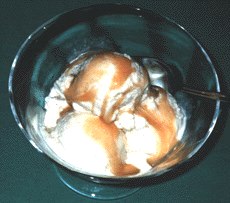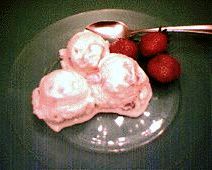Home-made Ice Cream
Who doesn't like ice-cream?
Whether purchased at the corner shop, from a refrigerated
van, or at a fashionable parlour on the Italian Riviera (arguably the best
ice-cream in the world) it's one of the true small pleasures in life. But it
needn't always come from somewhere else - why not try making your own. You don't
need an ice-cream maker and endless patience to produce your own home-made
ices…as you can see in the recipes we offer you here in
www.icecreamsite.com.
Homemade Ice Cream has not lost any of its good,
old-fashioned appeal. There is a delicious homemade ice cream to meet every
need: regular, low calorie, non-cooked and one using a non-dairy liquid coffee
whitener.
Everyone can make a homemade ice cream to suit their need
with convenience afforded by packages of ingredients from the supermarket.
Commercial Ice Cream
Everybody has a
favourite aroma or brand of ice cream and the dispute over whose ice cream is
the best, continues every year. While each producer develops its own particular
recipes, ice cream production fundamentals are basically the same everywhere.
The most
important ice cream ingredients come from milk. The dairy ingredients are
crucial in determining the characteristics of the final frozen product. Most ice
creams have at least 10% milk fat, the single most critical ingredient. The use
of varying percentages of milk fat affects the palatability, smoothness, colour,
texture and food value of the finished product. Gourmet or super premium ice
creams contain at least 12% milk fat, usually more.
Ice cream
contains non-fat solids (the non-fat, protein part of the milk), which
contribute nutritional value (protein, calcium, minerals and vitamins). Non-fat
dry milk, skim milk and whole milk are the usual sources of non-fat solids.
The sweeteners
used in ice cream vary from cane or beet sugar to corn sweeteners or honey.
Stabilizers, such as plant derivatives, are commonly used in small amounts to
prevent the formation of large ice crystals and to make a smoother ice cream.
Emulsifiers are also used in small amounts. They provide homogeneous whipping
qualities to the ice cream during freezing, as well as a smoother and drier body
and texture in the frozen form.
These essential
ingredients are agitated and blended in a mixing tank. The mixture is then
pumped into a pasteurizer, where it is heated and held at a predetermined
temperature. The hot mixture is then "shot" through a homogenizer, where
pressure breaks the milk fat down into smaller particles, allowing the mixture
to stay smooth and creamy. The mix is then quick-cooled to about 40°F and frozen
via the "uninterrupted freezer" method that uses a stable flow of mix that
freezes a set quantity of ice cream one batch at a time.
During freezing,
the mix is aerated by "dashers," revolving blades in the freezer. The small air
cells that are incorporated by this whipping action prevent ice cream from
becoming a solid mass of frozen ingredients.
The next step is
the addition of bulky flavourings, such as fruits, nuts and chocolate chips. The
ingredients are either "dropped" or "shot" into the semi-solid ice cream after
it leaves the freezer.
After the
flavouring add-ons are concluded, the ice cream can be packaged in a variety of
containers, cups or moulds. It is moved quickly to a "hardening room," where
sub-zero temperatures freeze the product to its final state for storage and
distribution.
Whatever else you need to know - you will be sure to find it here - at Icecreamtea.



